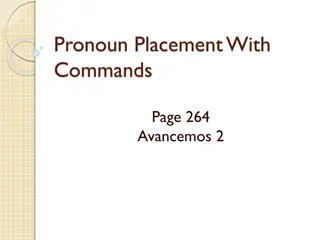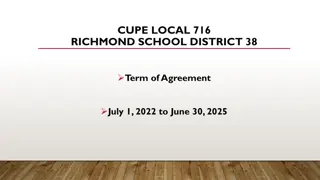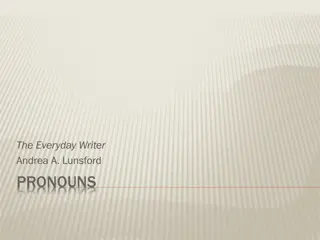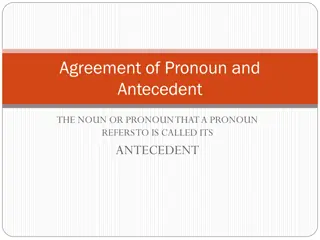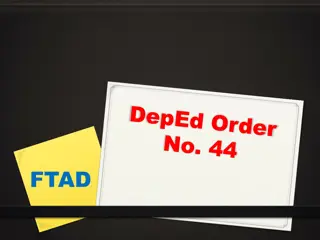Pronoun-Antecedent Agreement Basics
Pronoun-antecedent agreement is crucial in maintaining clarity and correctness in writing. Learn the basics of ensuring pronouns agree with their antecedents in number and gender through clear examples. Avoid common mistakes like using plural pronouns with singular antecedents and improve your writing with proper pronoun-antecedent agreement.
Download Presentation

Please find below an Image/Link to download the presentation.
The content on the website is provided AS IS for your information and personal use only. It may not be sold, licensed, or shared on other websites without obtaining consent from the author.If you encounter any issues during the download, it is possible that the publisher has removed the file from their server.
You are allowed to download the files provided on this website for personal or commercial use, subject to the condition that they are used lawfully. All files are the property of their respective owners.
The content on the website is provided AS IS for your information and personal use only. It may not be sold, licensed, or shared on other websites without obtaining consent from the author.
E N D
Presentation Transcript
Writing Lab Pronoun-Antecedent Agreement
Basics Antecedent word that a pronoun replaces or refers to Every pronoun must agree with its antecedent in number and gender Number refers to whether the pronoun and the antecedent are singular or plural Gender refers to whether the pronoun and antecedent are masculine (he, him, his), feminine (she, her, hers), or neuter (it, its)
Examples: Woman The woman has reached her decision. In the sentence above, woman is the antecedent and her is the pronoun. The two agree with each other both in terms of number (one woman, so a singular pronoun is used) and in terms of gender (woman is feminine, so a feminine pronoun is used)
Examples: His or Her Incorrect: Each voter has reached their decision. Although the pronoun and antecedent are both neuter, because voter is singular, the usage of the plural possessive pronoun their is incorrect. Correct: Each voter has reached his or her decision. His or her is both neuter and singular, so it agrees with the antecedent voter.
Examples: His or Her cont. Incorrect: Each student is responsible for doing their homework. Each is the singular antecedent, but their is plural. Correct: Each student is responsible for doing his or her homework. Each and his or her are both singular.
Examples: Specificity Incorrect: The man walked its dog before going to bed. Man is the singular antecedent, but its is neuter. Correct: The man walked his dog before going to bed. Man and his are both singular and masculine.
Thats all, folks! This lesson is part of the UWF Writing Lab Grammar Mini-Lesson Series Lessons adapted from Real Good Grammar, Too by Mamie Webb Hixon To find out more, visit the Writing Lab s website where you can take a self-scoring quiz corresponding to this lesson




